#html5 player
Explore tagged Tumblr posts
Text
Brick Together, Play Now!
Play Free Brick Together, Control the yellow block to push single colored blocks. Blocks of the same color stick to blocks of the same color when adjacent. If you push a block belonging to a group of the same color, the group is destroyed, except for the block you pushed. Only one block of each color should be left on each level. WASD or mouse
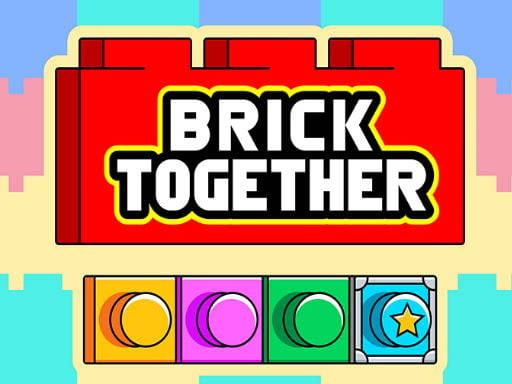
View On WordPress
0 notes
Text
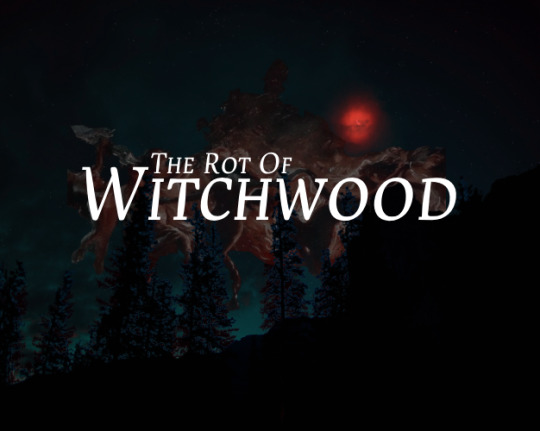
➳ The Rot of Witchwood
As a wayward Witch, you have enough to worry about. Your powers, gifted to you by a curious demon, the past you run from, even trying to get by enough without raising the ire of the neighbouring town. But when you find yourself implicated in a nefarious deed, it's time to step out of your own isolation, and clear your name.
This is a text based game about being a witch that is trying to hide from a past that hangs heavy over your head, while being plagued by memories of your family. What is meant to be a quick stay in the region of South Hollow, until you're caught up in the murder of a local boy, Luke Buckley.
It's up to you to totally erase any doubt that it was you, before the people from your past come back into the picture.
This game is 18+ and deals with topics such as murder, abuse, thoughts of suicide. There are also going to be adult scenes in general, but also between the player and the love interests, which are optional. A list of the origins found here!
Playlist here!
Prologue- Origins being Finished Up, Midway through Chapter 1
Itch.io page here!
Check out the WIP Mini NSFW E Rawlins game on Itch.io!
Beta Testers for typos and bugs are always welcome, please DM me if interested!

➳ Our Last Liaisons

Taking place nearly a century before the current events of the Witchwood, is a tale that takes place just a few days before the entire country of Varan goes dark.
Slipping into either the role of one of the lesser royal children or of a servant of no importance, witness the start of over a century of war and total silence from the entire east of the continent. The Basilica had never been able to touch Varan, the constant three rulers having always been united on the subject to never let them to spread their doctrine into their snowy, icy lands. For centuries each Tsar, Tsarina and Czar have not only fought back against the persecution of Witches, but due to their own familial history, have elevated each and every one into a noble house.
While remarkable, many things plague the imperial houses. Such as petty squabbles, consistently splitting courts, the business of marriage, vying for affections, and at long last... The perfection of the art of Tagging. An easy way for one of the Royal Witches to show a favorite among the courtiers.
Face these, as either one of the few people born above it all, the seventh child of the Tsarina Tatsiana of House Aureus or a lowly servant, barely even worth changing the sheets on the royal beds. See the two very different versions of living this life before the Century of Silence befalls your country.
This game is 18+ and deals with topics such as incest, abusive situations, dubious consent, human experiments and more.
Playlist here!
Progress: Shorter Demo is Out
Itch.io Page is HERE and the Password is "PashaMention"

➳ The Mad Heir

The worsening health of the King has caused not only a little bit of disarray in South Hollow, but also complete chaos in the government and the house of Royals. After the birth of the king's first grandchild, he had changed the law of succession. Crown goes to the first born... Or, a blood relative of the current Crown's choosing. And while they lay in their cradle, the King had announced that they were the one to inherit the crown.
Sadly, they've been missing ever since they came of age. So, while the entire stretch of the Isles have been turned upside down to find them, it turns out you've been minding your own business in a run down manor, kept secret by your father, the regent, for... Your very apparent imperfections.
Royals either waste away from sickness... Or become enraptured with a madness not seen in any others.
You sleepwalk through your days, unable to sleep at night, knowing there is something whispering from beyond your curtains, your blood singing back to whatever it is. Things plague you beyond the whispers, something lurks under your skin, angry and dark. It's what takes up most of your day, to the point you hardly realize your father has moved back into the manor, with his new spouse and stepchild he's aiming to install as the heir without anyone noticing. Oh well.
This game is 18+ and deals with step-cest, ableism towards mental health and physical health, subterfuge and negelct.
Playlist here!
Progress: Short demo released.
Itchio page here! The password is: "fuckyoudad"

References for RO's- Book 1, Book 2, Book 3, Our Last Liaisons, OLL Royal Siblings, The Mad Heir.
Patreon for behind the scenes, exclusive and nsfw content here!
Taking your opinions on future side games here and romances here (form still WIP)!
The Guide To The World
The Romances of Witchwood
Suggestions for Customization!
Masterlist of Asks:
Rot of Witchwood | The Mad Heir | Our Last Liaisons

Our Last Liaisons and The Mad Heir Info

➳♥ about me
Call me Inky. They/them nonbinary, nasty words peddler, amateur coder and an even worse graphic designer. I am also a student and working, so progress is slow, but thank you so much for sticking by me.
The blog banner was made by a wonderful friend, @willowaltz on Twitter.
439 notes
·
View notes
Text
Just finished updating my WIP about superheroes and cosmic horror ^_^
The game currently contains the first Episode and the first Interlude.
While working on the game I shifted through the COG documentation, watched GDC talks on branching narratives, read postmortems and played a lot of IFs.
I haven't been able to apply everything I learned to the first chapter of my IF, but I'll keep them in mind for the next one :)
So here is what I learned:
-shocker, people play IFs for the choices (appearantly data shows that one choice or interaction every 250-500words is preferred)
-games which focus on story tend to do better
-major branching should be done towards the end of a game not the beginning
-scope creep is a thing
-false endings, dead ends and fail states should be avoided, since they make for an unsatisfying story
-most games which claim to be 100k words on their first chapter actually have way less if one excludes repeated passages. Often (but not always) it's just a sign of bad coding rather than actual content.
-the majority of WIPs would really benefit from being short focused stories instead of stretching out a 10k word plotline to be 100k
-the vast majority of people only play through an IF once, meaning that if one has to choose between focusing on a good story with flavor choices and extensive branching, the former is preferable. (Although this highly depends on the type of project you are making)
-worldbuilding is cool, but it should not hurt the story's pacing. If the plot stops and an NPC just lore dumps 20 pages of history, players tend to get mad
-most coding questions can be solved by reading the relevant documentation (sometimes you will find what you are searching for in HTML5 documentations/tutorials; not sugarcube/twine)
-new vegas style stat checks (stats unlock optional branches) instead of automatic failure and success based on a number seems to be better for telling a narrative
-aggressively merging branches is the way to go
Some of the stuff here are guidelines at best, but I think that I am still going to try to follow them as best as I can.
#indie game dev#indie dev#twine interactive fiction#interactive fiction#choice of games#devlog#game development#cyoa#cyoa game
9 notes
·
View notes
Text
Kitty Gram Puzzle Game, Play Now!
Play Free Kitty Gram Puzzle Game, The traditional logic game “Tangram” meets cute kitties, forming the most adorable brain teaser out there! Match blocks of kitties into the empty areas of the level. There are 576 puzzles, can you solve them all? Use the mouse or your finger to drag the blocks If you are stuck you can use one hint on each level

View On WordPress
1 note
·
View note
Text
I think the future of generative AI, post OpenAI is bloatware. Remember that weird period around 2014 when HTML5 was replacing Flash and there was still a bunch of old, janky Flash players scattered around the web? That’s what “ask the chat bot” and “summarize with AI” boxes are going to feel like. If they don’t already. — Ryan Broderick, Garbage Day
17 notes
·
View notes
Note
So, What program are you using for the walk through?
google recommended gdevelop for html5 games and i don't know any better so i'm using that! so far i like it well enough tho it's one of those things where it's supposed to have templates for everything so people can make games without learning to code but then it totally doesn't and you have to know how to code anyway (i think this might just be every game making software ever, they all seem to be lacking seamless built-in functionality for the most basic stuff, like giving the player different walking animations based on which way you're going and generic rpg dialogue boxes)
the backend parts are basically done so now it's just doing a bunch more sprites, probably a bitmap font since regular courier is looking kind of shitty when rendered ingame, and implementing the dialogue and interactable objects
here are some "sneak previews" ft jade's real final talksprite
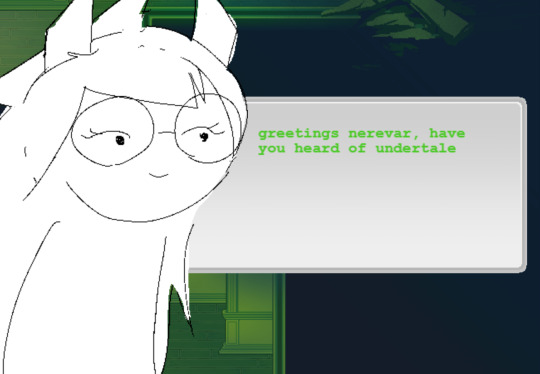
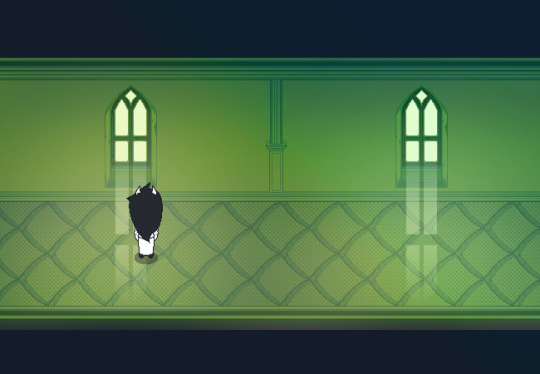
24 notes
·
View notes
Text
RE:KMRG SIDE STORIES - TWO EVENTS AT ONCE?!
Oh hey, looks like Summer Nights' rerun theme has been announced!
What's "Summer Nights"?
A special Splatfest, Susie. Happened last summer, too. Every time one of those splatfests happen, Kyle dolls up the blog for it. Fuckin' awesome work on that, by the way.
Thanks, Dystopiac. Here are the themes.

So which team are you picking? Since Big Man will be Air, I'm assuming Air?
Yes, I'm going team Air on this one.
Did you get that last nostalgia trip?
Yes again, Advisor. We're eight-for-eight on nostalgia trips being triggered. What was I reminded of this time, you may ask?
Well, I was actually reminded of a bunch of games by Nitrome.
Nitrome made some really good Flash games back in the day, and they actually have been trying to covert every single one of those games to HTML5 so people can still enjoy them today.
Their entire artstyle is 16-bit pixel graphics, and they're really charming.
I believe we ripped one of their games in the past! If my memory serves me right, it was Super Treadmill.
But which games did the Summer Nights teams remind you of?
Well, I'll show you.
-🔺💜🔵💕✍🏼🌸🃏-
For Team Land, I saw an ol' classic: Steamlands, along with their Player Pack update.

I made so many levels with this game's level editor. I think I still have an old USB flash drive somewhere in my IRL household chock-full of levels I made with the in-game level editor.
How many levels are on that flash drive?
I dunno, around 50, maybe?
50 LEVELS?! That's quite a lot.
Yeah, they were curated over the course of a few years, mind you.
-----
For Team Sea, I was reminded of a game me and my younger brother used to play Co-Op mode a lot on: Mutiny.

It's simple: fling bombs (or yourself) at opponents, and take them out before either they take you out or you run out of turns.
Sounds like a lot of fun!
It really was. Me and J-Man had a lot of fun blasting our guys away. Sometimes I even booted up 2-player mode by myself and treated it like a sandbox mode, as it had every bomb unlocked from the start.
-----
As for Team Air, it reminded me of a couple things, but most notably the first Nitrome game I ever really played.

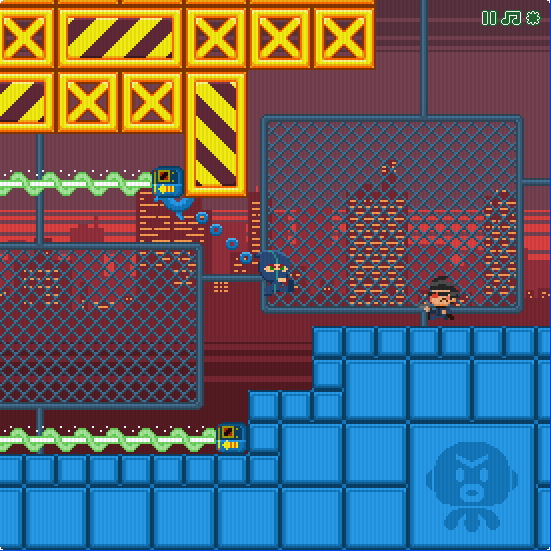

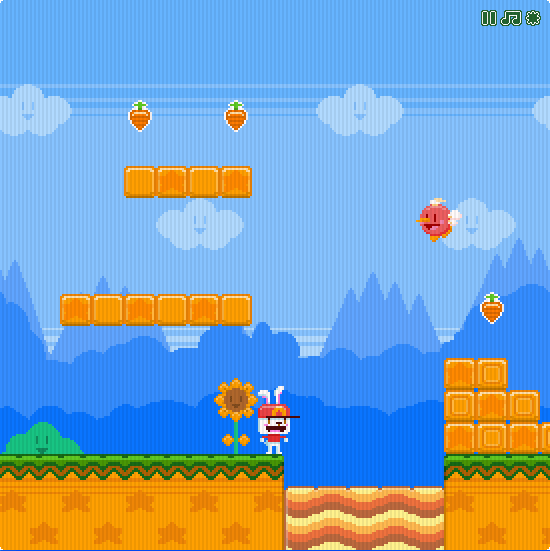


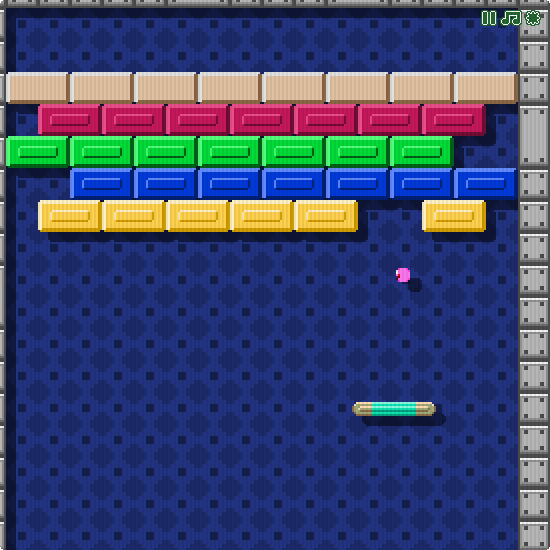
MEGA MASH.
This game's a "Nitrome Entertainment System" game, meant to be a 7 in 1 cart. The whole premise was that the game cartidge is so badly damaged the games are bleeding into each other, making it so you have to play 7 different games at once in order to beat all 30 levels.
Two of the games are even prequels to other Nitrome games, those being "Ninja" and "Balloon". "Ninja" is a prequel to the Final Ninja games, and "Balloon" is a prequel to the Hot Air games (btw, the original Hot Air game was Nitrome's first ever flash game)!
A majority of the games on there have you travelling through the air, hence why I was reminded of it when Team Air came to mind.
Oh! That sounds like quite an intriguing game! I like that all those different games types can blend together so well.
-----
And you wanna know how I found out about Nitrome? MOSHI MONSTERS. No, I'm not kidding. Moshi Monsters had an area known as the "Moshi Fun Park", and other flash games were hosted there, with some Nitrome games being thrown into the mix.
How fitting that my namesake was what introduced you to Nitrome.
Indeed, M.O.S.H.I., indeed.
-🔺💜🔵💕✍🏼🌸🃏-
So, you gonna doll up the blog for Summer Nights again? God, I hope you are.
Yes, but I'll have to find a way to have it and the RE:KMRG theme included.
You always do, Kyle.
"Yes. The only time you didn't make your Tumblr have a fancy theme was with us. I don't really mind, though, it was the first time you'd done something like that."
Heh, thanks guys. Funny how, just like SiIvaGunner, I'm about to run an event for Summer Nights as well as this one. Two events at once, I've never done that before.
But I can make it work. Like Alter said...
I always do.
#altering the outcome#ask irl!alterrune#ask the ato cast#the colorstreak battalion#re:kmrg#regarding: kyle micheal ryan gibbons#ask joke explainer 7000#ask susie haltmann#ask the new squidbeak splatoon#ask pmd!kyle and blastie#splatoon#splatoon 3#splat3#splatoon 3 summer nights#summer nights#land vs sea vs air#team air
2 notes
·
View notes
Text
I have mixed feelings on the recent announcement by Ganz about rewriting Webkinz in HTML5. It feels so surreal to me, having seen almost every other major online game go down around the end of the 2020's. I don't think I've seen a single one except Poptropica actually go through with the overhaul, and even then that was less of an overhaul and more of a really bad reboot.
And like. Idk. it's always felt more like Ganz wanted to abandon Classic for something more modern over the years. More content has been cut than preserved. The new plushies. And there's been like... at least 3 separate Webkinz-esque spinoffs over the years, that all seemed to want to get a new playerbase. I can't entirely blame them from a business perspective: virtual pets have fallen out of favour as time's gone on, pure 3D's easier to work with, and everything's moving to mobile nowadays.
There's a really cynical part of me that thinks this is just a publicity stunt to get players to stay for longer, or that this'll be another Webkinz X update. But at the same time, I think they do have an incentive to actually improve the game now. It's the only thing they have that's lasted 20 years, despite everything. The remaining playerbase is now old enough to shill out for old plushies and membership, and they have reintroduced some old games over the years. Maybe Ganz isn't big enough of a company anymore to be able to cut things willy-nilly, and there's more money to be made in a revival; there's no game quite like Webkinz anymore.
...I think there's been too much bad news since like 2016 for me to believe this is real anymore. And given everything that's happened in virtual worlds recently, I think I have the right to be suspicious.
I hope none of the bad stuff does happen though. And whatever happens, I'll still be really happy to play in browser again.
#webkinz intern running the tumblr account hi if you see this. you don't need to respond i'm just thinking out loud#dots dots dots#webkinz#kinzblr
3 notes
·
View notes
Text
Flash Was Killed Because It Was Objectively Dangerous
I get it, I get the Flash nostalgia and the fondness for old Flash games. I was big on Neopets before they decided to ruin the art and make all the pets samey paper dolls to play dressup with (completely ruining the point of the far more expensive "redraw" colors like Mutant and Faerie and Desert). I have fond memories of Newgrounds games and I even managed to take a class for a semester in high school where I could learn flash.
But I also remember how terrible it was. And you should too.
Leaving aside all of the issues involving performance and inaccessibility (such as being easily broken by bog-standard browser actions like the back button, and its ability to modify web code AND OS code in real time likely broke a lot of accessibility tech too), Flash was legitimately one of the most dangerous web technologies for the end user. An end-user is you, or more specifically back then, child-you.
According to Wikipedia and its sources, Flash Player has over a thousand vulnerabilities known and listed and over 800 of these lead to arbitrary code execution.
What is arbitrary code execution? That's when someone can just run any commands they want on a machine or program that didn't intend it. A fun way to see this is in this infamous Pokemon tool-assisted speedrun where they manage to get an SNES to show the host's twitch chat in real time. It's not so fun though when it's someone stealing all the files on your computer, grabbing your credentials so they could clean out your Neopets account (yes, really, it was a pretty common concern at the time), and other nefarious works. Also, there was a time where it allowed people to spy on you with your webcam and microphone.
Oh and on top of all of this, Flash had its own "flash cookies", which could not be cleared by ordinary means and thus could be used to track users indefinitely, at least until Adobe slapped a bandaid over it by introducing yet another screen an ordinary person wouldn't know to use. (I assume this is how the infamous neopets "cookie grabbers" worked, so they could get into your account. This is mainly what I remember about using Flash back in the early 2000s lol) So it not only was a "stranger taking over your machine" concern, but a bog-standard privacy concern too, arguably a precursor to our current panopticon internet landscape, where greedy websites would track you because they could and maybe get some money out of it, facilitated by this technology.
When Apple decided to block it, it wasn't out of greed; Steve Jobs cited its abysmal performance and security record, among other issues such as an inherent lack of touchscreen support, and Apple cited specific vulnerability use-cases when blocking specific versions before they nuked it entirely. When Mozilla, who makes Firefox, decided to block it, it's not like they would've gotten money out of doing so, or by offering an alternative; they did so because it is fucking dangerous.
Your ire and nostalgia is misplaced. Flash was not killed by our current shitty web practices that ruin unique spaces and fun games. Flash was killed because both Macromedia (its original developers) and Adobe were incapable of making it safe, if that was even possible, and it was killed after third-parties, in an unprecedented gesture, collectively threw their hands up and said enough.
Well, that and HTML5 being developed and becoming more widespread, being able to do everything Flash can do without being a pox on technology. One could argue that you should bemoan the lack of Flash-to-HTML5 conversion efforts, but that requires asking a lot of effort of people who would have to do that shit for free...and if they have to run Flash to do so, opening themselves up to some of the nastiest exploits on the internet.
Nostalgia is a fucking liar. The games themselves I think are worth having nostalgia over (look, I still find myself pining for that one bullet hell Neopets made and Hannah and the Pirate Caves), but Flash itself deserves none of that, and absolutely deserved to be put in the fucking ground. You're blaming the wrong causes. It was terrible.
(specifics and sources found via its wikipedia page, which has a lot more than is mentioned here. and also my own opinions and experiences back then. lol)
#flash#nostalgia really is a liar#don't trust it#technology#yet another instance of my unfettered autism#adobe flash#macromedia flash#the old web#I was there gandalf three thousand years ago lmao#personal context: I am now a software QA that tests web apps#and when I was a child I was absolutely a neopets addict and am on Subeta TO THIS DAY#I learned HTML and CSS when I was 12#largely to spruce up my Neopets profile#I have been on the internet A While now#(I understand how ironic it is given that my tumblr layout is kind of shit; I will fix it soon)
20 notes
·
View notes
Note
if pet hotel had little games and activities like neopets or club penguin puffle games, what would they be?
whatever would be within my skill level to program i guess
i think i would start out with a game where the pet is holding a basket beneath some trees and you have to catch falling fruit by moving the pet left and right. sounds nice and simple enough, and once i had enough of a variety of simple games i would then feel free to try and experiment with something more complex and take as much time as i need since the simple games are able to fill that space where something needs to be right now
if i made this a website-based virtual pet game like neopets and flight rising are, something that's gonna be tricky and would probably take me a long time is i would have to learn how to make an html5 application (which is what these games would be if this was the case, since flash is dead) that would be able to read pet information and user information from a database so the pet could appear in the minigame, be able to modify values like the amount of money the player has so the player can earn money by playing these games, and this database needs to be able to be read and written to by both these minigames and by regular pages like a player's profile page where you'd be able to see your current money balance, for instance. The only experience I have in regards to creating an html5 application is running the html dist Gradle command that libGDX has, which just converts all of your java code into javascript as its own contained thing when for this I would need to make something that actually has the ability to talk to other things. I would have to learn a ton of php in order to make this a thing as well, which I don't have a lot of experience with either.
If I were to turn the pet hotel into a fully-fledged automated and programmable game with my current knowledge and skillset, I think I'd have an easier time using libGDX and Java Swing to make it, and then people would have to download a jar file for it off of itch.io in order to play it. I feel like more people would play it if the game was entirely website-based because people don't really like to download things, which is kind of understandable, but learning web development is really hard and from what little I do know about it I'm kind of bad at it. I took a class where I learned how web sockets work in Java so I think I could be able to make something that connects online like this, but I would have to rent some server space in order to do this so the pet hotel would become something that starts actually costing me money to run if I did this. Also I already have a full-time job so the progress I would make on this would be pretty slow, and sometimes I struggle to muster up the motivation to even just make regular art during the time that I'm not working because my brain just kind of sucks like that. So for now i just run this thing that pretends to be a video game but is actually not because my brain prefers the instant gratification of watching youtube videos and playing video games that other people have already made instead of using that time to learn how to make a video game myself
3 notes
·
View notes
Text
ok that post has 7 reblogs which is kind of exciting but also very embarrassing cuz the game doesnt do anything yet.
i am an aspiring [front-end] web developer and HTML, CSS, and javascript are foundational parts of that job, so i have a solid basis for making an HTML5 game using javascript.
ive probably got around 2-3 dozen hours of crying over javascript under my belt and ive been doing it semi-regularly for a few months (just kind of building random bullshit-- the first independent project i made was a number guesser, and more recently i made a wordle clone that i based a little more than loosely on this tutorial) so thats a beginner project but i am by no means like. just dipping my toes into javascript.
ive been adapting from this specific youtube tutorial. the main changes ive made are the player moving instead of the map. it requires knowledge of objects, nesting, and object/constructor methods, which is something i didnt have a strong basis in before i started the tutorial, but its really straight-forward and the guy does a great job explaining it.
if youre having trouble with the tutorial cuz your foundational javascript isnt up to par, freecodecamp just updated their javascript algorithms and data structures tutorial and it fucks SOOOOO HARD. the first project is building a simple text-based RPG which is what inspired me to try and build a simple 2d game. i dont recommend making this jump unless youre actually at least semi-comfortable in javascript but it is VERY doable.
i drew the sprites in paint.net which is free and it has a grid tool and allows transparency. no tutorial for that i just like pixel art even if im really bad at it lol.
7 notes
·
View notes
Text
Pricing Plans | Video Hosting and Live Streaming for Businesses | SproutVideo
In today's world of Internet streaming platforms anyone can own their own television channel or network in minutes if you don't know how to build a WordPress website with an HTML5 video player with a playlist.
Haven't you found it really strange that all of these years that there's no 24/7 Black Mainstream News Network in America? What about a 24/7 Black International News Network that can be broadcast from every continent on earth? These are a few examples that when we complain about what Hollywood is doing, do your own.
I really get so disappointed when I see or hear Black Indigenous People globally becoming annoyed with how we are displayed in the media when we have the ability to change this ourselves. Anything one human can do, you can do the exact same thing.
Stop complaining about something that we can do ourselves, we have all types of opportunities and abilities that we can do without anyone else's influence, stop complaining and start doing.
#black love#black positivity#black africans#black history#black media#black entertainment#black new world order
2 notes
·
View notes
Text
Working on my website, and damn if there isn't a good audio player, through Wix hosting.
Luckily, I have access to the custom app creator, and with a little HTML5, JavaScript, and CSS, I should be able to cobble up an audio player that saves your place, and can have a customizable seek option.
Now how to integrate it with accounts, and CMS?
7 notes
·
View notes
Text
Zuma Deluxe New is a modern variant of arcade with simple rules. In the center of the playing field there is the most important object for the user - a stone frog. This is not a simple monument - it shoots colored "charges", acting as a large cannon.
Throughout the field snakes a maze, on which move multi-colored balls. Their colors are arranged in any order. The frog "spits out" a ball of a randomly occurring color, and the player needs to shoot it so that it hit the clusters of balls of the same shade. If it turns out to create a combination of three or more balls of the same color, they solemnly burst, and the user receives prize points.
In the event that the player chronically misses or acts too slowly, the balls in the lined chain managed to slip to the edge of the playing field, "falling" into the hole, stylized as an image of the open mouth of some monster.
For the player this does not mean anything good - for him the game is lost, you can repeat until you start to get. And everything will come out necessarily, the player only needs to combine with excitement and focus.
Bonuses and features
The game provides several levels of complexity. The first of them are created so that even the most inexperienced beginner could win. This is understandable, it is necessary to stimulate interest in the activity. But the game has an invaluable feature - it is very addictive. Even with the first defeats you do not want to give up, because you wake up the desire to prove to yourself that everyone can cope with a combination of several colored balls.
In principle, it is so. In order to win this game on more complex levels, you need to adhere to simple recommendations:
Do not let the chain of balls of different colors fall too low, otherwise shooting "frog" becomes difficult, and about the aiming hit can be forgotten.
In order to successfully "knock" balls out of the chain, you need to act quickly, but in an orderly manner. It is pointless to shoot anywhere, hoping to hit the target. This is the most wrong and destructive strategy.
Special attention should be focused on the "frog" at the moment of appearance of another colored "projectile". Although it is only visible for a few seconds, with a good reaction, this is enough to correctly select the target and shoot.
In order to win at high levels, you should try to get as many useful bonuses as possible. They fall out when you hit special balls accurately. Bonuses can increase the number of points, slow down the movement of the chain, bring it back and so on. This is very beneficial and useful for the player.
Even if it seems that this variant of Zuma is too easy, do not underestimate it without trying to play it. We are sure that after the first attempt the player's opinion will change dramatically for the better. This is a great workout for the brain, a kind of workload that allows you to develop your eyesight, observation, reaction speed, ability to analytical thinking. These are very good qualities that show that computer games can also be useful.
#Zuma Deluxe#zuma#paw patrol zuma#gaming#gamesforkids#google play#logical#gamesforgirls#puzzle#puzzle games#card games#backgammon#tarot cards
4 notes
·
View notes
Text
I rediscovered this article I wrote about twelve years ago about a cool music project utilizing a map of NY subways, and surprisingly, the website itself is still up!
SUBWAY MUSIC
Created by Alexander Chen, musician and programmer at Google Creative Labs, the Conductor/ MTA.me project turns a digital map of the New York subway system into a musical instrument.
The “strings” of this instrument are formed by the paths of trains as they travel across the screen. When a train crosses over the path of another, it plucks the string, creating a cello pizzicato note (borrowed from the website freesound.org, a database of Creative Commons Licensed sounds). A viewer can also use their mouse to pluck the strings, which will change in pitch as they get longer. The trains’ paths spawn in real time beginning from the time at which the viewer first enters the site, then running through a rapidly accelerating 24-hour cycle. Train departure times are drawn from the Metro Transit Authority’s own current schedule of departures and arrivals.
The appearance of Conductor/MTA.me is based off of the 1972 map of the New York subway system created by eclectic design artist Massimo Vignelli. Although the map was rather controversial in its time-- largely because it was not to exact scale and deliberately ignored much of the above-ground geography— its clean, color-delineated lines made an ideal template for Chen’s creation.
Chen first created his line-plucking code for Crayong, a project that allows a user to draw a series of lines which transform into functional instrument. The genesis of Crayong, and ultimately Conductor/MTA.me came during a lunchtime visit with Chen’s friend David Lu. The two of them sketched out an idea Lu had for an instrument made from drawn lines that turned into pluckable strings. Chen later created a mock-up of the design in Adobe Flash. To impart a sense of realism to the strings’ physics, he used trigonometry to limit the distance a string could be drawn and decreased the flexibility as a player moved towards either end of the string.
Conductor/MTA.me is not Chen’s only experiment with pluckable drawings. He was also the mind behind the Les Paul Google Doodle, launched on June 9th 2011 as a tribute to the inventor of the solid-body electric guitar. This Doodle is an interactive digital instrument that plays sample notes taken from Chen’s own electric guitar.
Additionally Chen, along with musical engineer Tyler Williams and web developer/dancer Aidan Feldman, created Stringer, a program that uses the Kinect 3D camera. Much like Crayong, Stringer allows a participant to draw a line and pluck it to produce a note. In this case, however, the line is drawn in the air from gestures made in front of the Kinect’s camera, creating, in effect, a real-life “air guitar” (or “air cello” in this case since Stringer appears to use the same sound samples featured in MTA.me). Unlike Crayong and MTA.me, which were created with HTML5, Stringer was built using C++ and an open source programming language called Processing.
2 notes
·
View notes
Text
so i poked around the mozilla forums, and the mediasource thing enables the html5 video player, which is supposed to help with the video quality, but that does mean it prefers loading in chunks instead of entire videos (just in case you decide to stop watching a 2 hour video, paused it, and then close the tab. so your browser didnt spend all that precious bandwidth on loading something you didnt even finish).
When turning off mediasource it affected my quality somewhat (though ymmv) and somehow YouTube specifically still wouldnt preload the whole video.
so if you don't wanna turn off the html5 video player you can instead try:
- changing "media.cache_readahead_limit" (how many seconds it will buffer) to a higher number. It defaults to like 60 seconds, i set it to 900 so it loads 15 minutes ahead. you can set it to 9999 to load almost every video
- change "media.cache_resume_threshold" (only start buffering further when the current buffer is shorter than X seconds) to a much higher number. it defaults to 30 seconds, but you can set it to something else to make it start loading the rest in advance while you watch.
you can also combine turning off mediasource with the above, though i'm not sure whether that'll help much
I miss the days when, no matter how slow your internet was, if you paused any video and let it buffer long enough, you could watch it uninterrupted
323K notes
·
View notes